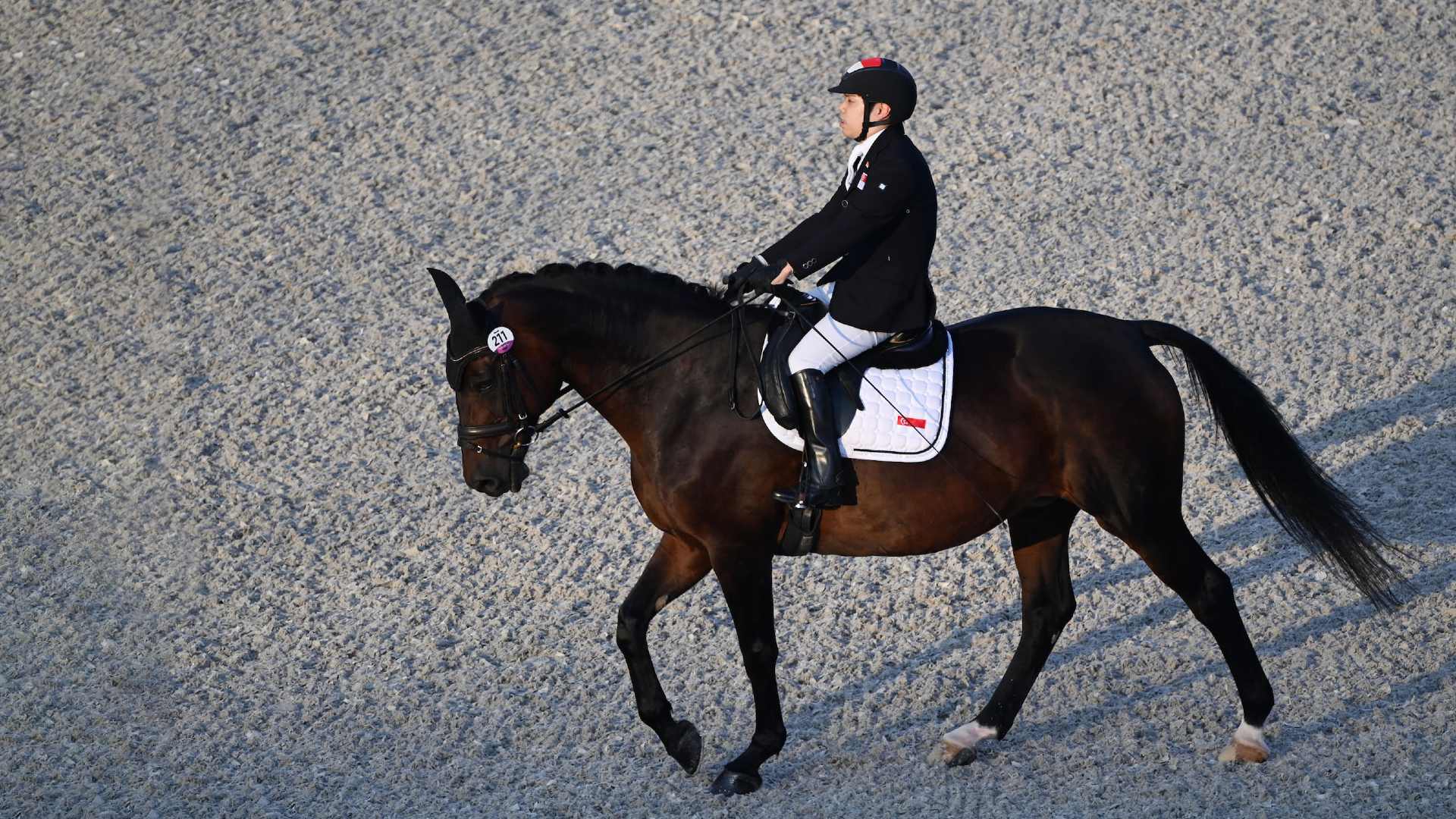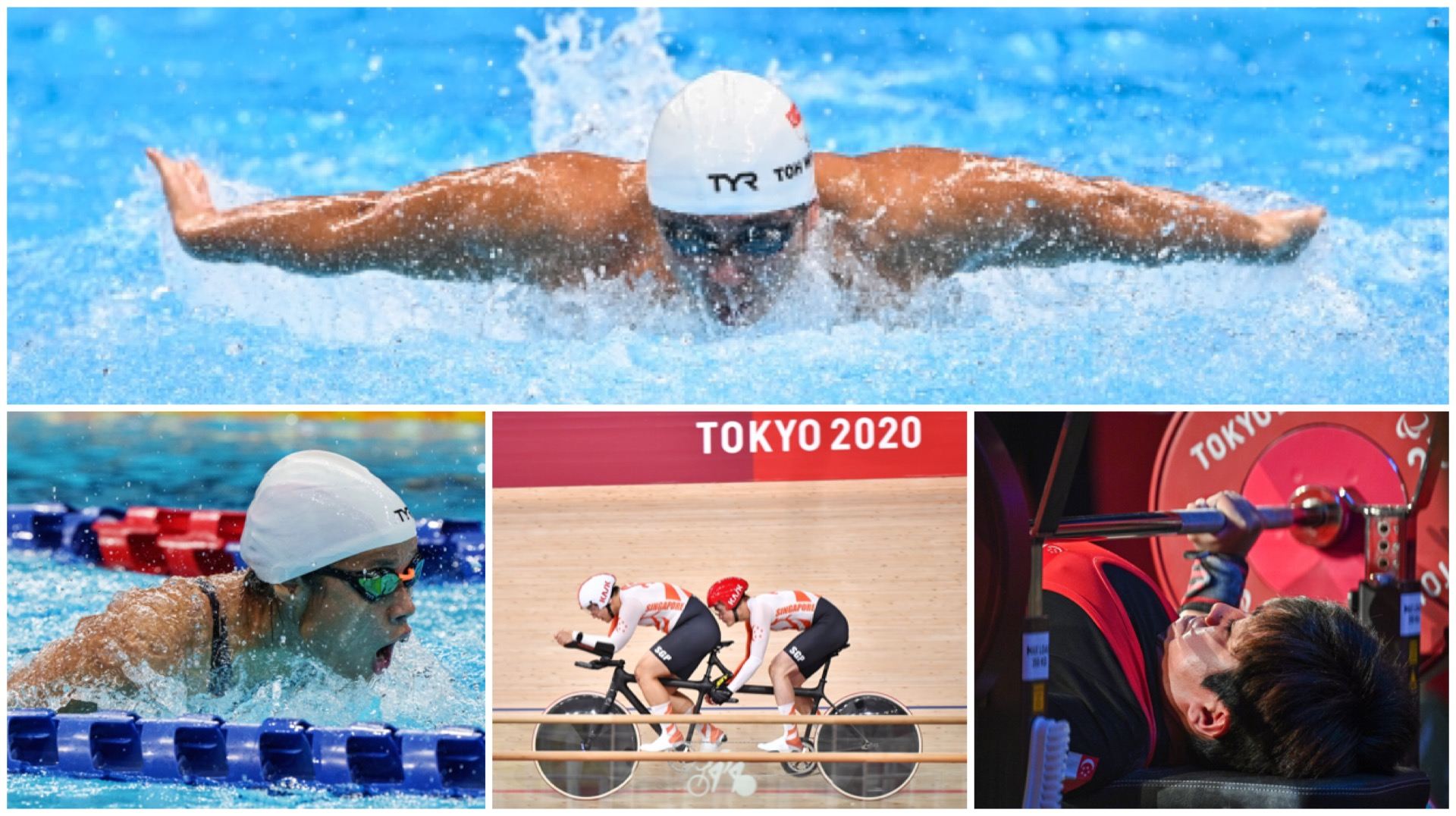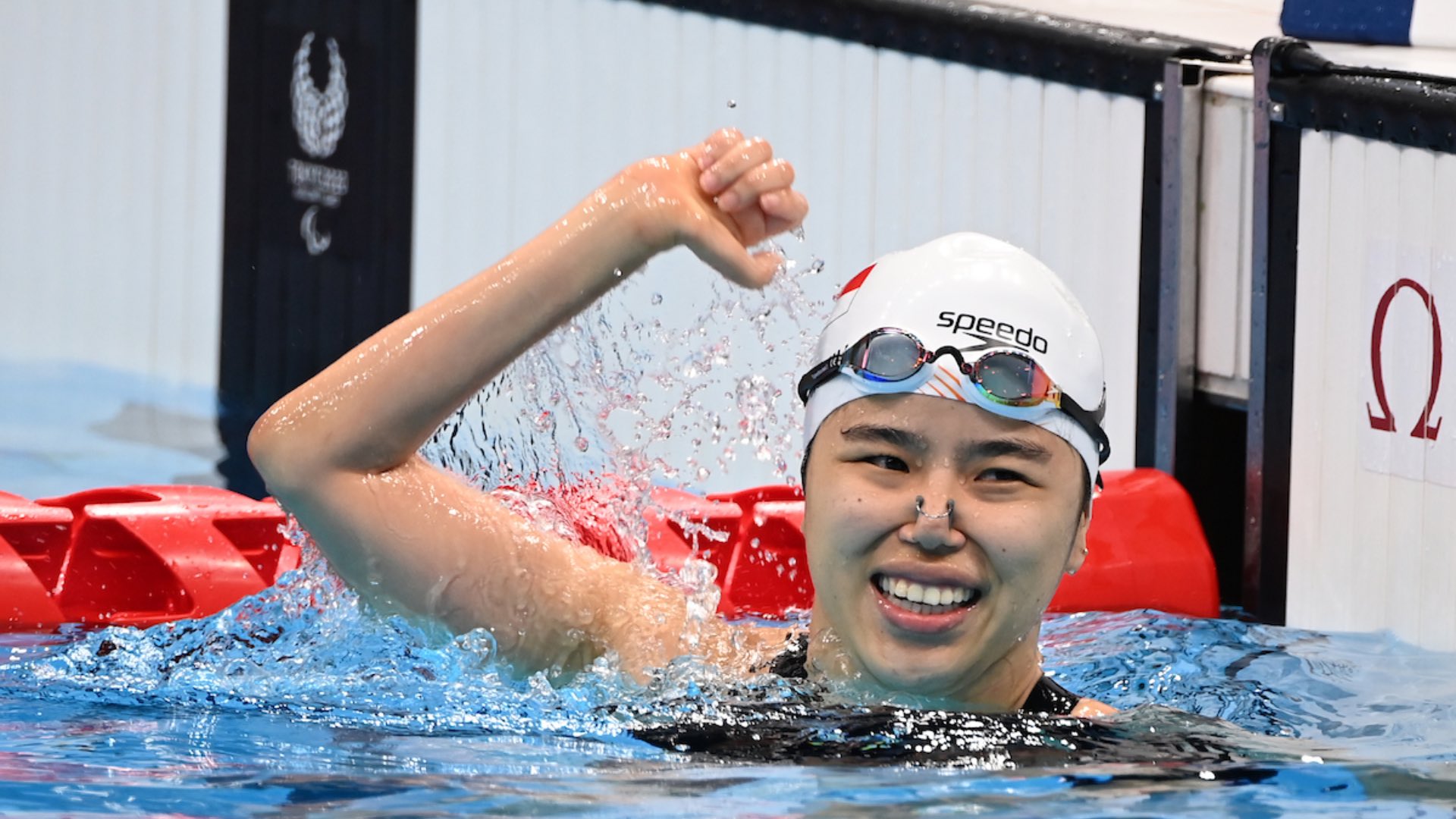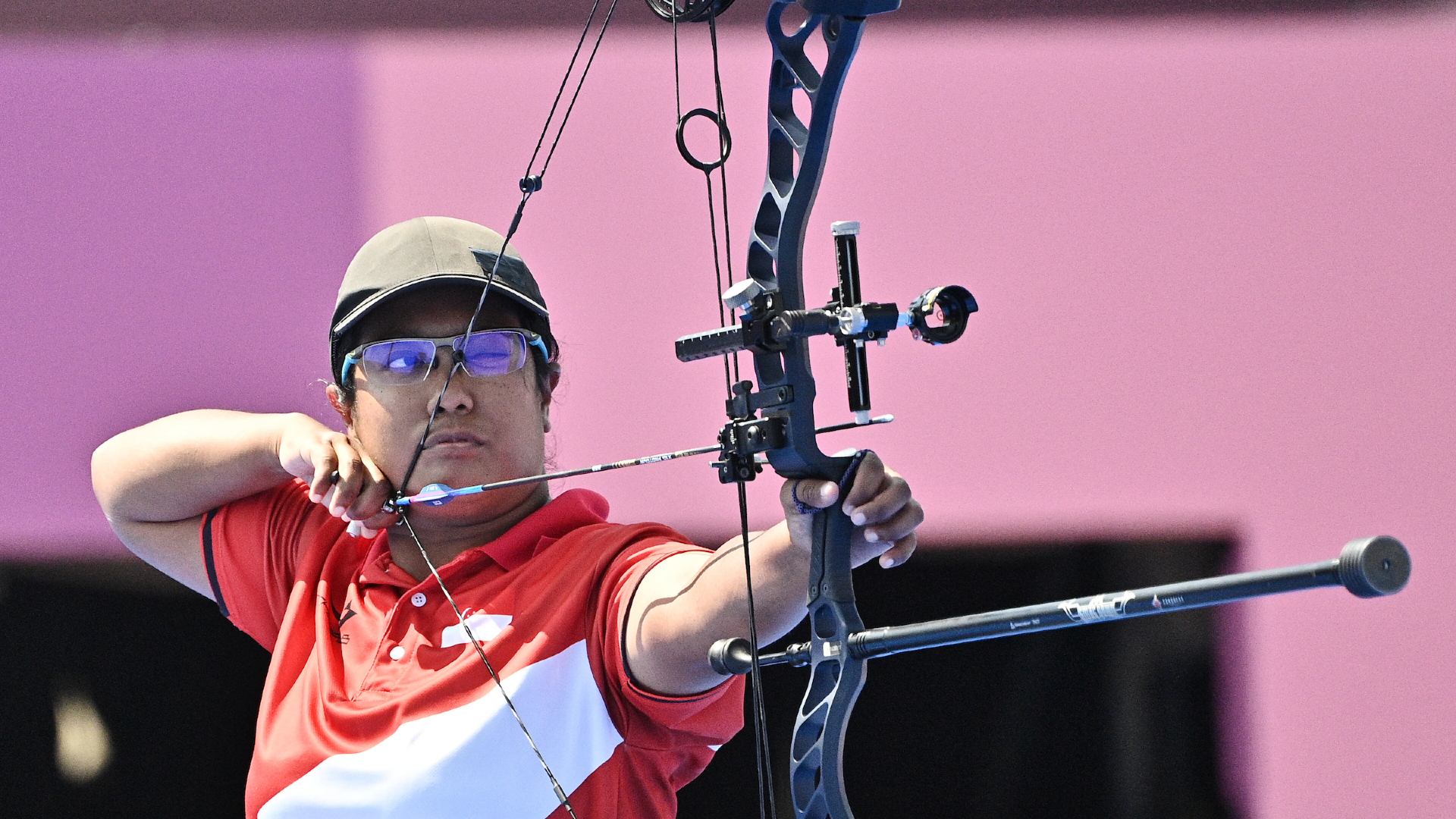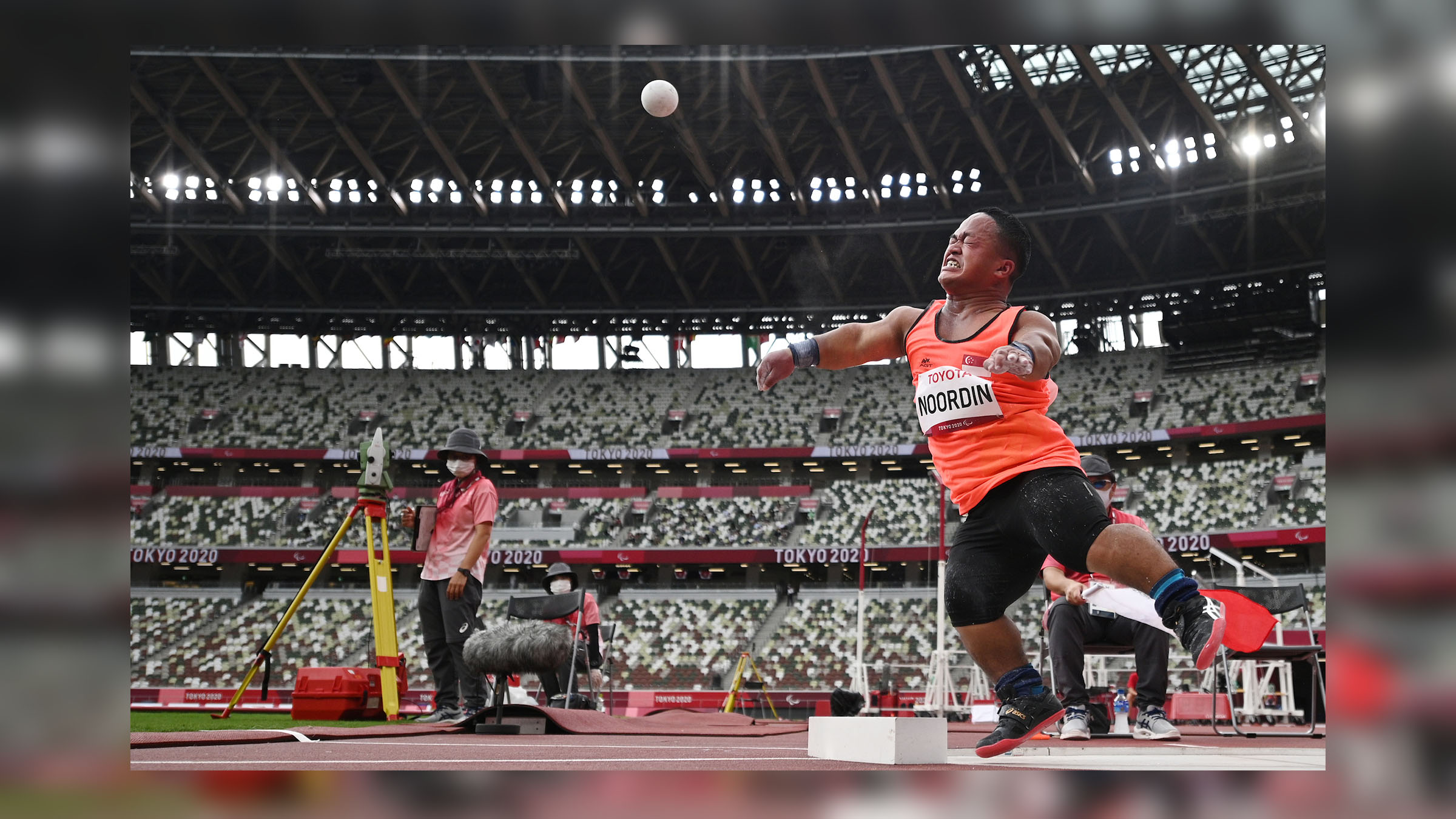Yay Or Neigh: Are These Facts About Para Equestrian True?
Before we start our fun quiz, hoorays are certainly in order for the displays put up by Team Singapore's para-equestrian trio at the Tokyo 2020 Paralympic Games.
Laurentia Tan and her steed Banestro rode to a top 8 spot in the Dressage Individual Test - Grade I event. Scoring 73.964 percentage points she ranked 5th out of 18 athletes, qualifying her to compete for a medal.
In the Dressage Individual Freestyle Test - Grade I finals event, she finished with a higher score of 75.060, but finished 5th overall in the final results.
Gemma Rose Foo and Gambler scored 62.750 by the panel of 5 judges, only 7.679 points away from 8th spot. Also amazing was the fact that the 25-year-old scored higher than the 62 points she achieved in Rio 2016, after her usual partner Cassius Royal suffered an injury.
If you ask any rider, the relationship between their horse and them is exactly like pair skating – both need to be in sync to put up the best performance for the judges.
And that's why Singaporean para-equestrian Maximillian Tan was all smiles, being able to compete with his long-time partner Don’s Day Dream. He finished with an overall score of 61.588, missing out on the top 8 spot by just 5.236 points.
“I am happy with how Dreamy, my horse, has performed. I am also thankful that she came out of retirement to join me for this Games. But of course, I would have liked to have done better for sure," says the 34-year-old.
"I am just glad to be able to be here and riding amongst the best during this difficult time. I am glad my horse is as willing as her age can be and, thus, I will do my best, and together we hope to contribute to the team score.”
The trio had a great showing in the Dressage Team Test-To-Music event, finishing 14th for a combined score of 200.792%.
.jpg.jpg?sfvrsn=f8fdf443_0)
As for 42-year-old Laurentia, she had been eager to add to her medal tally of 1 Silver and 3 Bronze from Beijing and London.
"It was a good performance with Banestro, he was nice and relaxed, and I really enjoyed the ride. The haptic vest really helped, even though it'll never be the same as hearing the music, it gives me a bit more confidence and reassurance that I am following the rhythm and phrases of the music," says Laurentia.
"It's been amazing to be here in Tokyo. It's been an honour and a privilege to be here, and I wish it was under better circumstances. However, everyone has been so warm, welcoming and encouraging - I would like to say thank you to Japan for their amazing hospitality and for making my first trip to Japan a memorable one!"
The SubPac (shown in the video above) is a haptic vest that translates sound into vibration, giving Laurentia cues to help identify the rhythm and intensity of the music.
This is only one of many cool facts unique to para-equestrian, the only sport in the Paralympics that features animals and was first competed in Atlanta 1996.
In celebration of our para-equestrian trio's showing at Tokyo 2020, see if you can tell which of these facts about para-equestrian are true or false - or rather, just say yay or neigh.
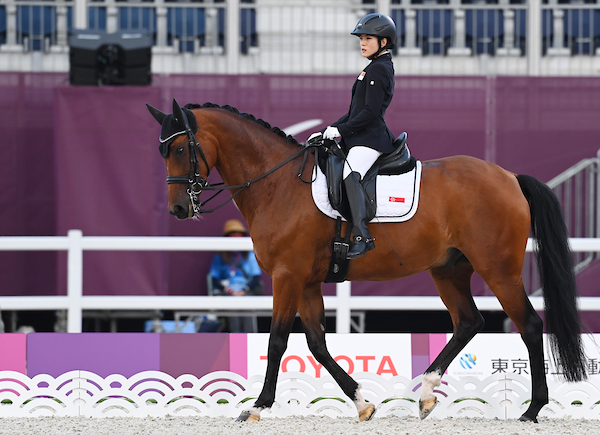
YAY OR NEIGH?
Para-equestrian is a racing event.
Neigh! They compete in Dressage, which tests the ability of the rider and horse to perform set routines, the only exception being Freestyle to Music. It takes years of practice to perform in complete harmony.
Athletes always rode their own horses since Atlanta 1996.
Neigh! It was only in Athens 2014 that para-equestrians rode their own horses. Because the sport came from therapy riding, many athletes didn’t own a personal horse, and used borrowed horses for Atlanta 1996 and Sydney 2000.
Horses can bring a horse-friend to the competition.
Yay! Horses in grades I to III can be supported by a “friendly horse” to help the competing horse chill and relax. They walk together into the area but the friendly horse stays outside during the performance.
Men and women compete in different categories.
Neigh! Equestrian is one of the few sports in the world where men and women compete against each other according to the same rules. And if you’re wondering, the horse’s gender doesn’t matter either - males and mares compete against one another equally too.
.jpg.jpg?sfvrsn=b5fb2634_0)
Judges look at the movement of both the rider and horse.
Neigh! Judges look at the movement of the horse only. The scores are tabulated from a set criteria called the “scales of training” – rhythm, suppleness, contact, impulsion, straightness, and collection. Judges score out of 10 for the prescribed movements the horse makes.
Horses have to undergo a drug test
Yay! 100% true, horses are held to the same standards as the riders. The International Federation of Equestrian Sport (FEI) tests the horses. Another weird fact: horses pee in a cup on a stick on cue when you spread a fresh bag of shavings on the floor. It’s because the horses think they are marking their territory.
Horses are transported on a plane
Yay! They fly on specially adapted chartered aircraft in flying stables, usually in twos along with special handlers. Not only do they have their own in-flight meals (hay and water), they have passports and may need to quarantine at their place of destination too.
Horses can get jetlagged
Yay! But it depends on the horse – it’s something that riders learn. Some horses can be raring to go when they land but get jetlagged after, others are easily affected and need to travel two weeks in advance to prep them back for competition.
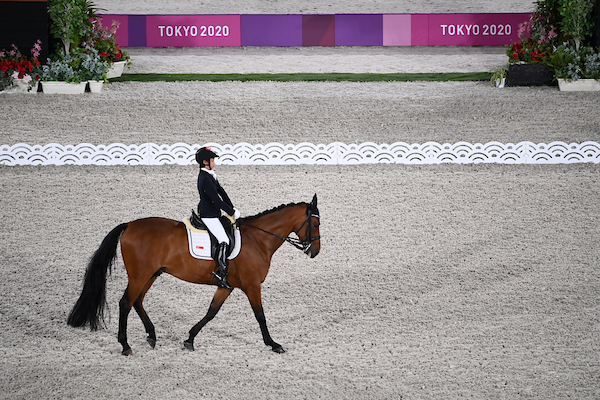
Laurentia Tan is the first Asian woman to win a Paralympic medal in equestrian sport.
Yay! She won two Bronze medals at Beijing 2008, not only becoming the first Singaporean to win a Paralympic medal but also the first Asian woman to do so in equestrian. She took home a Bronze and Silver medal at London 2012.
For the latest updates on Wonderwall.sg, be sure to follow us on TikTok, Telegram, Instagram, and Facebook. If you have a story idea for us, email us at [email protected].







